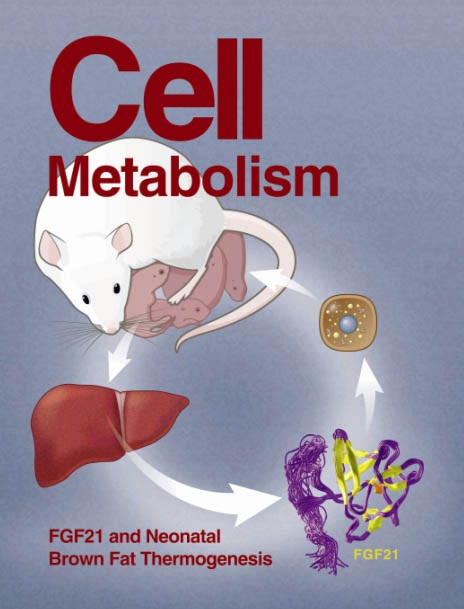局部GLP1受体预内化指导胰腺α细胞与β细胞之间的通讯
IF 30.9
1区 生物学
Q1 CELL BIOLOGY
引用次数: 0
摘要
胰腺细胞通过释放胰高血糖素以旁分泌方式调节细胞功能。然而,详细的分子结构背后的α - β细胞调节仍然缺乏表征。在这里,我们发现胰高血糖素样肽-1受体(GLP1R)作为纳米结构域富集在与α细胞接触的β细胞膜上,与增加的单分子转录物表达保持一致。在低糖条件下,靠近α细胞的β细胞通过预内化GLP1R直接感知微摩尔胰高血糖素的释放。预内化的GLP1R与早期β细胞对高葡萄糖的Ca2+反应有关,然后在胰岛上传播。相邻的细胞比相邻的细胞分泌更多。局域GLP1R信号在体内和体外都存在,在餐后状态下起作用,代谢应激时β细胞和α细胞之间的GLP1R接触减少。因此,我们详细介绍了胰高血糖素调节胰岛素释放的调控途径。本文章由计算机程序翻译,如有差异,请以英文原文为准。

Localized GLP1 receptor pre-internalization directs pancreatic alpha cell to beta cell communication
Pancreatic alpha cells modulate beta cell function in a paracrine manner through the release of glucagon. However, the detailed molecular architecture underlying alpha-to-beta cell regulation remains poorly characterized. Here, we show that the glucagon-like peptide-1 receptor (GLP1R) is enriched as nanodomains on beta cell membranes that contact alpha cells, in keeping with increased single-molecule transcript expression. At low glucose, beta cells next to alpha cells directly sense micromolar glucagon release by pre-internalizing GLP1R. Pre-internalized GLP1R is associated with earlier beta cell Ca2+ responses to high glucose, which are then propagated across the islet. Beta cells adjacent to alpha cells are more secretory than beta cells next to other beta cells. Localized GLP1R signaling occurs in vitro and in vivo, is operative in the post-prandial state, and GLP1R contacts decrease between beta cells and alpha cells during metabolic stress. Thus, we detail a regulated pathway through which glucagon modulates insulin release.
求助全文
通过发布文献求助,成功后即可免费获取论文全文。
去求助
来源期刊

Cell metabolism
生物-内分泌学与代谢
CiteScore
48.60
自引率
1.40%
发文量
173
审稿时长
2.5 months
期刊介绍:
Cell Metabolism is a top research journal established in 2005 that focuses on publishing original and impactful papers in the field of metabolic research.It covers a wide range of topics including diabetes, obesity, cardiovascular biology, aging and stress responses, circadian biology, and many others.
Cell Metabolism aims to contribute to the advancement of metabolic research by providing a platform for the publication and dissemination of high-quality research and thought-provoking articles.
 求助内容:
求助内容: 应助结果提醒方式:
应助结果提醒方式:


